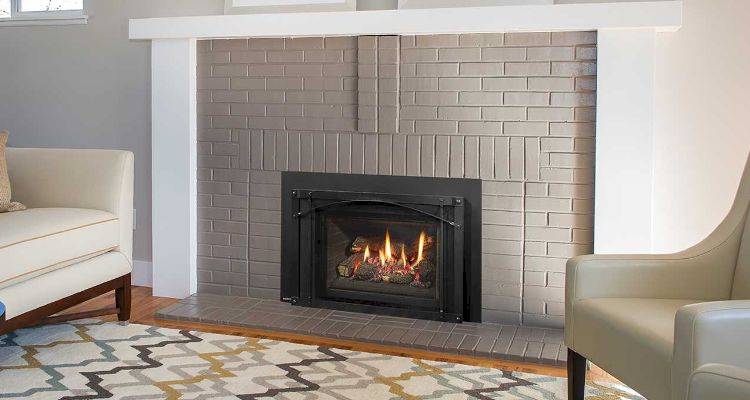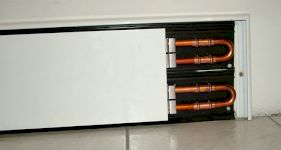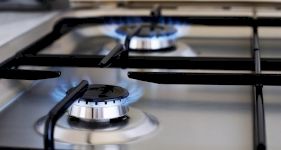Radiator Installation Guide
Are you interested in learning more about radiator installations?
In this guide, we will go over everything you need to know, including radiator installation costs, the different types of radiator you can get for your home, installing a radiator, and what to look out for when finding the right contractor to install a radiator for you.
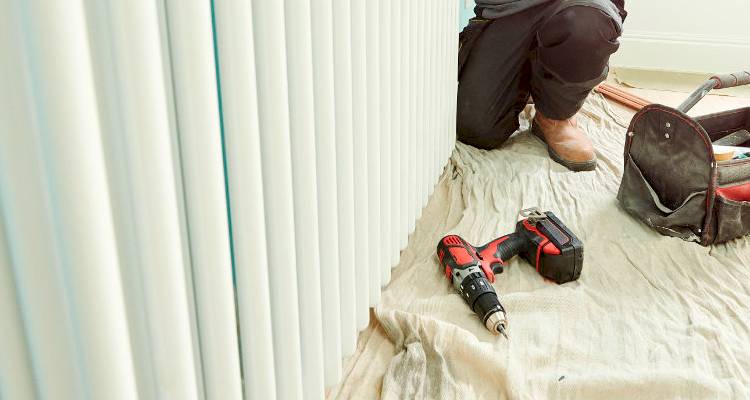
Table of Contents
- What is a Radiator Installation?
- Types of Radiator
- What Are the Pros and Cons of Installing a New Radiator?
- How Much Does It Cost to Install a Radiator?
- How to Install a Radiator
- How Long Does It Take to Install a Radiator?
- Building Regulations or Planning Permission Approval for Radiator Installation
- How to Maintain a Radiator
- Radiator Repairs
- Questions to Ask When Hiring a Radiator Specialist
- FAQs
- Sources
What is a Radiator Installation?
A radiator installation involves installing a radiator at your home. Radiators are a great addition to a home. If you are looking to add some extra heat to a room, you may wish to install an extra radiator.
Alternatively, you may be interested in upgrading your heating system and having new, more efficient radiators installed.
Depending on the type of installation, you may also need to have new pipework installed behind the wall, which then feeds into the new radiator.
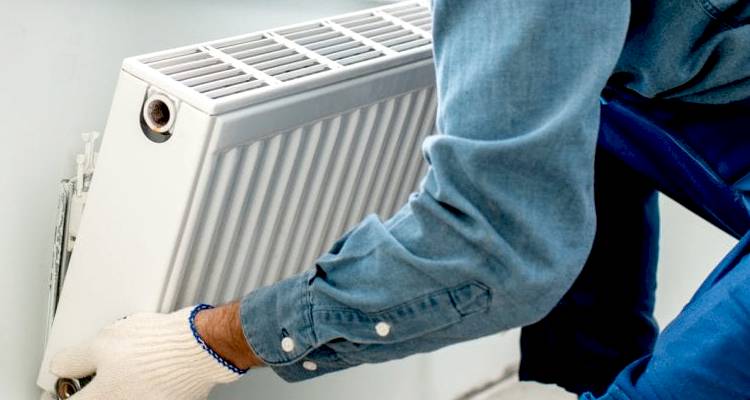
Types of Radiator
There are several different types of radiator that you can get installed at your home. Below is a list of the different types of radiator and the advantages and disadvantages of each style:
Central Heating Radiators
Central heating radiators have the highest heat output of all plumbed radiators and benefit from being extremely energy-efficient. This is what makes central heating radiators the most popular choice of radiator in UK homes.
This type of radiator uses corrugated panels that work to radiate heat out into the room. You can choose from single panel or double panel radiators.
Single panel radiators are best for small rooms, and double panel radiators are best for larger rooms as they produce more heat.
PROS
✔ Very efficient
✔ Quick to heat
✔ Produces a lot of heat
✔ Choices of single panel or double panel
CONS
✖ Double panel radiators can be bulky
Column Radiators
Column radiators are great for providing a traditional, period aesthetic to your home. If you live in an older home, or if you're looking to make your home feel more traditional, then a column radiator could be the perfect option for you.
These radiators are very similar to cast-iron radiators, which were most common during the Victorian era. The modern version of these column radiators provide that same traditional look as the original cast-iron radiators, but they offer much greater efficiency than the older models.
PROS
✔ High efficiency
✔ Traditional aesthetic
CONS
✖ It may not be to everyone's taste
✖ Could be bulky
Designer Radiators
A designer radiator can have many advantages and come in a huge range of styles. Some of the advantages of this type of radiator include space-saving technologies, intricate designs, and dual-purposes.
Dual-purpose radiators are great for small spaces as you can incorporate a radiator into something that you would already have in the room, such as a mirror or a memo board.
Designer radiators are great for adding a modern, contemporary flair to any room in the house. They can create an incredibly stylish look and can fit into the décor of your home.
Designer radiators tend to be quite expensive, so they're not a great option if you're on a tight budget.
PROS
✔ Space-saving
✔ Modern aesthetic
✔ Stylish
✔ Beautiful designs
✔ Can double up as something else
CONS
✖ Not as energy-efficient as most other radiator models
✖ Expensive
Vertical Radiators
Vertical radiators can come in a range of different colours and styles. These radiators are very convenient as they can usually fit perfectly into small spaces.
This means that you can heat more of your home than before, and the radiator is larger than a horizontal one that could fit into the same space.
If you have a small room that you need to heat up, a vertical radiator is a perfect option as it takes up much less space than a horizontal radiator.
This means that you have more room to place furniture or décor in the room. If you choose a bold design, you can even incorporate your vertical radiator into part of the décor.
PROS
✔ Space-saving
✔ Stylish
✔ Can fit in with the décor
CONS
✖ Always visible
Cast Iron Radiators
A cast iron radiator takes much longer to heat up and cool down than other radiator models. This allows them to keep the heat in the room for much longer after you've turned the heating off. These radiators are great for rooms with high ceilings.
Cast iron radiators are mostly found in period homes and fit in well with the traditional look of a period home. However, they can also make a beautifully stylish feature in a more contemporary modern home.
PROS
✔ It keeps the heat in for longer
✔ Great for large rooms with high ceilings
✔ Adds period charm
CONS
✖ It takes longer to heat up
✖ It can corrode over time
Flat-Panel Radiators
Flat-panel radiators are the easiest type of radiator to install. They are designed to be light and compact, so they can fit into most rooms without taking up a large amount of space.
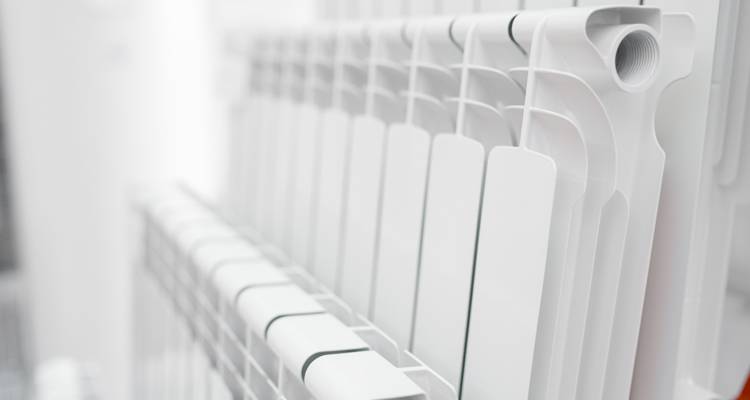
Although they are not the most attractive radiators, they are relatively efficient and heat the room well. They are also quite cheap to buy. Flat-panel radiators come in a number of sizes to suit most rooms.
PROS
✔ Easy to install
✔ Light and compact
✔ It doesn't take up much room
✔ Low cost
CONS
✖ Don't produce as much heat as other models
Stainless Steel Radiators
A stainless steel radiator is very efficient and looks amazing in most rooms. The unique look of this type of radiator makes it a stunning room feature that can fit in with the décor of your home. They are available in a range of colours and sizes and are very easy to maintain.
Unlike other metals, stainless steel won't corrode, so these radiators are guaranteed to last a very long time.
PROS
✔ Efficient
✔ Stylish
✔ Easy to maintain
✔ Won't corrode
✔ It lasts a long time
CONS
✖ Not to everyone's taste
✖ It can be quite expensive
What Are the Pros and Cons of Installing a New Radiator?
There are several advantages and disadvantages to installing a new radiator in your home. Below, we take a look at the main pros and cons of having a new radiator installed:
PROS
- Energy Efficiency – Installing new radiators in your home will improve the energy efficiency of your property – especially if your current radiators are quite old or you rely on alternative heating methods such as electric heaters or electric radiators. Modern radiators are built to be extremely energy-efficient.
- Appearance – Over time, radiators will start to look dull and outdated and may even start to erode in some areas. New radiators can improve the overall appearance of your home. You can even choose designer radiators that can add to the décor.
- More heat – New radiators can produce much more heat than an older radiator. Over time, radiators tend to develop sludge and air bubbles, which can affect the way it heats up. You won't need to worry about these issues with a new radiator.
CONS
- Price – Some radiators can be quite expensive. If you have more than one radiator added to your home, then the material and labour costs can really add up.
- Pipework – If you are installing an entirely new radiator, then there will be extra pipework involved. Your contractor will likely have to get through the wall to install new piping for your radiator. This can end up being quite a big job and may end up costing you much more than anticipated.
How Much Does It Cost to Install a Radiator?
If you're interested in installing a new radiator at your home, then you may be interested in learning what radiator installation costs may be involved.
The overall cost that you pay will depend on many factors, including the type of radiator you are installing, your location, the job's difficulty, and whether any extra plumbing work is required. We will go over new radiator replacement costs and the cost of installing a radiator.
Aside from the cost of the radiator itself, you will also have to pay for the labour of fitting the radiator. Removing an old radiator and replacing it with a new one is quite a simple job that can usually be completed in a couple of hours.
The average cost to remove and replace a radiator is around £150-£300. However, if there is extra plumbing involved, then you may have to pay more for the extra materials and the extra time that this will take.
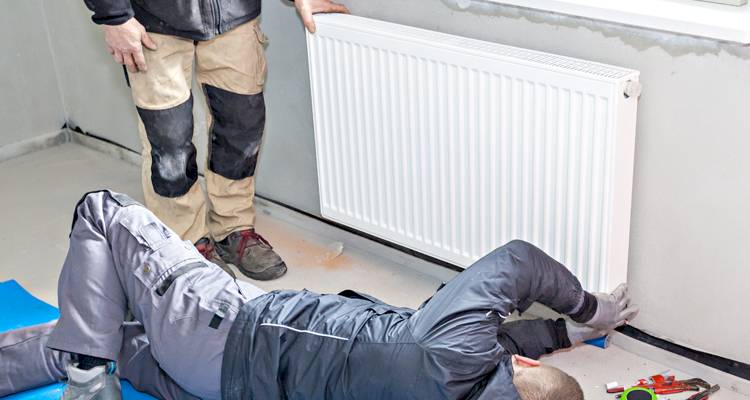
If you are looking to move a radiator from one part of the room to another part of the room, this could cost around £120-£180. However, this cost will depend on the type of radiator, the difficulty of the job, and the amount of extra plumbing work that may be needed.
If your radiator has stopped working or isn't heating efficiently, then you may just need to bleed your radiator. This is quite a simple task that can be done as a DIY job, however, some homeowners prefer to leave this task to a professional.
The average cost of hiring someone to bleed your radiators for you is around £80-£150.
How to Install a Radiator
If you are simply performing a radiator removal and replacing an old radiator with a new one, this is something that can be done as a DIY job.
However, if there is any additional pipework involved or if you intend to make any changes to the central heating system, then this will need to be performed by a professional plumber.
Some jobs require a gas safety engineer – especially if there is any work to be done on your gas boiler.
Below is a step-by-step guide on replacing a radiator:
- Start by removing and cleaning the old PTFE for the radiator valve tails. Use a tail key to do this and apply the new PTFE ready for fitting to the new radiator. You must ensure that you wrap this around in the correct direction. If you're holding the valve in your left hand, you should be rotating the tape in a clockwise direction.
- Once your new PTFE has been added, you can then remove the old wall brackets from the previous radiator, ready to replace them with new ones. These will usually need to be unscrewed from the wall.
- Once the wall brackets have been removed, you should position the new radiator as far from the wall as the valve outlets are above the floor. You will then need to take measurements and mark outlines on the wall, ready for installing the new brackets.
- Next, fit your new radiator brackets to the wall according to your measurement markings. These will usually need to be pre-drilled and screwed in to secure them.
- Replace the tail key and bleed valves to your new radiator.
- Once the brackets are secured to the wall, you can then place the radiator into position. Ask someone to help you with this step as radiators can be quite heavy.
- Once in position, tighten the connectors to the valves with a wrench. Ensure these are fully tightened.
- Top up the heater tank with a corrosion inhibitor to help extend the life of your new radiator.
- Open both valves again. This should be done by the same number of turns that it took to turn them off.
- Use your radiator key to bleed the new radiator.
- Once complete, turn your heating on and check for any leaks.
How Long Does It Take to Install a Radiator?
If you're interested in getting a new radiator installed at your home, then you may be curious as to how much time the job will take.
The time it takes to install a new radiator will depend on a few factors, including the type of radiator installation, the ease of access, and how many radiators are being installed.
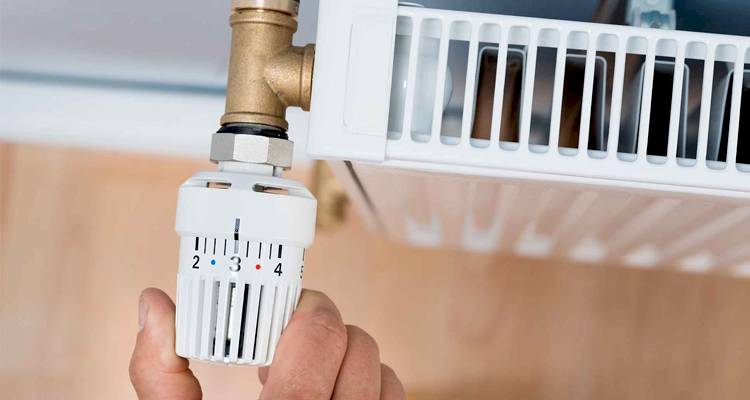
If you are planning on removing a radiator and replacing it with a similar radiator, then this is quite a quick job that can usually be completed within a couple of hours.
An additional radiator installation with extra pipework needed could take around 0.5-1 day. If you are replacing all of the radiators in your home, this will usually take around 1-2 days, depending on how many radiator replacements are needed.
Building Regulations or Planning Permission Approval for Radiator Installation
In most cases, you won't need to worry about planning permission or building regulations approval for replacing a radiator. However, if you are installing a new radiator to your system, then you may need building regulations approval.
Your plumber should be able to advise you on whether this is necessary for your particular radiator installation.
If you are unsure whether you might need building regulations approval, then it is best to seek advice from your local authority before going ahead with the work.
How to Maintain a Radiator
A gravel driveway is quite easy to maintain in comparison to other driveway types. It doesn’t require any major cleaning and the maintenance is easy to keep on top of. Below is a list of things that you can do to maintain your gravel driveway:
Remove Debris
If you have a radiator system in your home, it won't require much maintenance. However, there are some basic steps that you should take roughly once a year to keep your system in top shape. Keeping your radiators well-maintained will save energy and will help your radiators to function more efficiently.
The most important task is bleeding the radiators if any air enters the system. Even though the pipework is closed, air can escape from the water over time, resulting in your radiators not working effectively. Take a look at the "radiator repairs" section below for information on how to bleed a radiator.
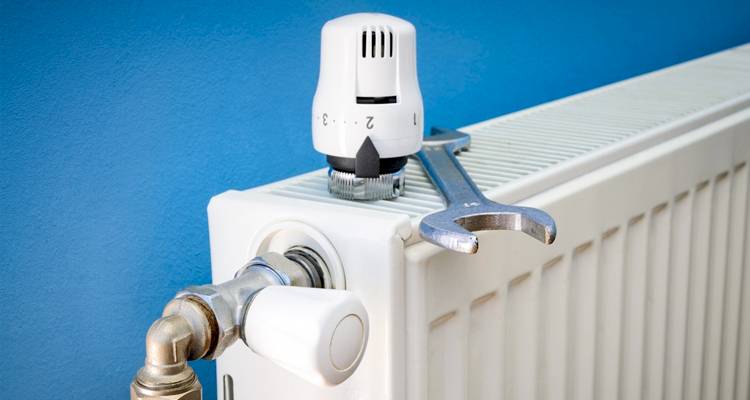
If you notice any leaks in your radiator system, you should turn off the central heating immediately until you have identified the source of the leak. This can then be rectified, and your system should be back in working order quickly.
Radiators can sometimes collect dust and dirt. You can clean your radiators using a duster or with a damp cloth.
Radiator Repairs
Radiators will sometimes require some minor repairs. Below is a list of common radiator problems and the best way to fix them:
Bleeding a Radiator
If your radiator is cold at the top but hot at the bottom, this is a sign that there is air trapped in it, and you will need to bleed it. Take the steps below to bleed your radiator successfully:
- Turn off the heating system and allow the radiator to cool down.
- Use a radiator key and turn the bleed valve in an anti-clockwise direction to open the valve.
- Your radiator will start hissing as the air escapes. Hold a cloth underneath the valve to catch any water.
- Once the water starts trickling out, close the valve by turning the key clockwise.
- Turn your system back on and re-pressurise the boiler if needed.
Creaking Pipes
Creaking pipes are usually caused by the pipes expanding due to hot water and rubbing against the wall, floor, or other pipes.
The best way to resolve this is to widen the pipe notches in the joists, clip any unsupported pipes, or pack insulation between and around each pipe.
Humming Sounds in Pipes
Humming sounds coming from the pipes could mean that the pump speed is too high or that your pipes are too narrow for the flow. In these cases, it's best to call an engineer to come and inspect your pipework and determine an appropriate solution.
Rushing Sounds in Pipes
If you hear rushing sounds in your pipes, this could be due to gas or air bubbles in the system.
The best course of action, in this case, is to bleed all of the radiators in your system. If the problem persists after you've done this, you'll have to call an engineer to come and inspect your system and determine an appropriate solution.
Radiator is Completely Cold
If one of the radiators in your system is completely cold, this could be because your manual control valve is turned off. Check the valve on the radiator and turn it on if needed.
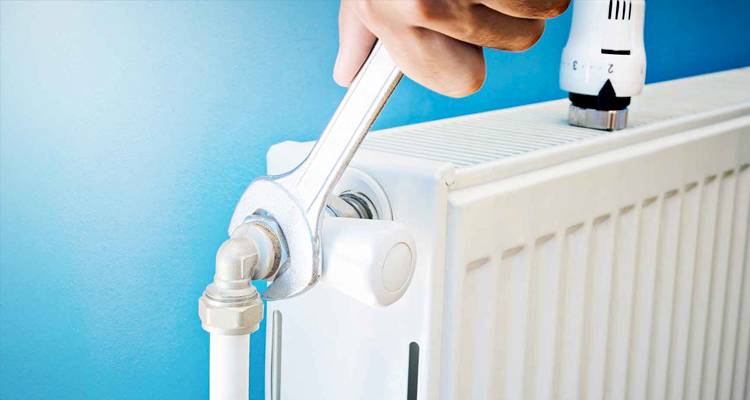
If the valve is already turned on, then the thermostatic radiator valve may need resetting or faulty. In this case, try resetting the valve or replace the valve with a new one if needed.
Questions to Ask When Hiring a Radiator Specialist
You may need to consider several things when finding the right contractor to install a radiator in your home for you. Below is a list of common questions that you should ask when looking for the right contractor for the job:
- Does the contractor have any qualifications that relate directly to installing radiators?
- What equipment will the contractor be using to complete the job? Will they be using the correct type of equipment? Do you need to provide any equipment?
- Does the contractor possess any form of insurance for the work? You should look for contractors who have insurance that covers property damage, personal injuries, and a work guarantee.
- How much experience does the contractor have in installing radiators? Can they provide any testimonials or evidence of previous work? Can they provide photos of previous work?
- Does the contractor offer any guarantees with their work? How long does the guarantee last? What issues are covered under guarantee? Will the contractor fix any issues that arise?
- How long will the work take to complete?
- How many contractors will be working on the job?
- Is the contractor on the gas-safe register?
FAQs
Can you paint a radiator?
Can you install a gravel driveway on top of grass?
When it comes to a gravel driveway, it’s always best to have a strong sub-base underneath the gravel, and grass simply won’t provide a stable enough surface.
How do you remove a radiator?
- Turn off the radiator and ensure that it is completely isolated from the rest of the system.
- Place rags and towels beneath the radiator to catch any escaping water.
- Undo the radiator valve nut.
- Place a washing-up bowl beneath the radiator and drain the water.
- Use a bleed key to open the bleed valve. This will help to drain the last few drops from the radiator.
- Close the bleed valve again and then move to the valve on the other side of the radiator. Open this valve.
- Remove any remaining water. Gently lift the radiator and tip any remaining water into the bowl.
- Once you're happy the water has been removed, push tissue paper into the valves to bung them up.
- Gently lift the radiator from its brackets. You should ask someone to help you with this step as radiators can be quite heavy.
How big does my radiator need to be?
What are thermostatic radiator valves?
What is the best type of radiator?
What is a towel radiator?
Sources
https://www.diy.com/ideas-advice/how-to-fix-problems-with-radiators/PROD_npcart_100309.art
https://www.completehomewarranty.com/maintaining-boiler-radiator-system
https://www.bestheating.com/info/how-do-i-maintain-my-radiators


